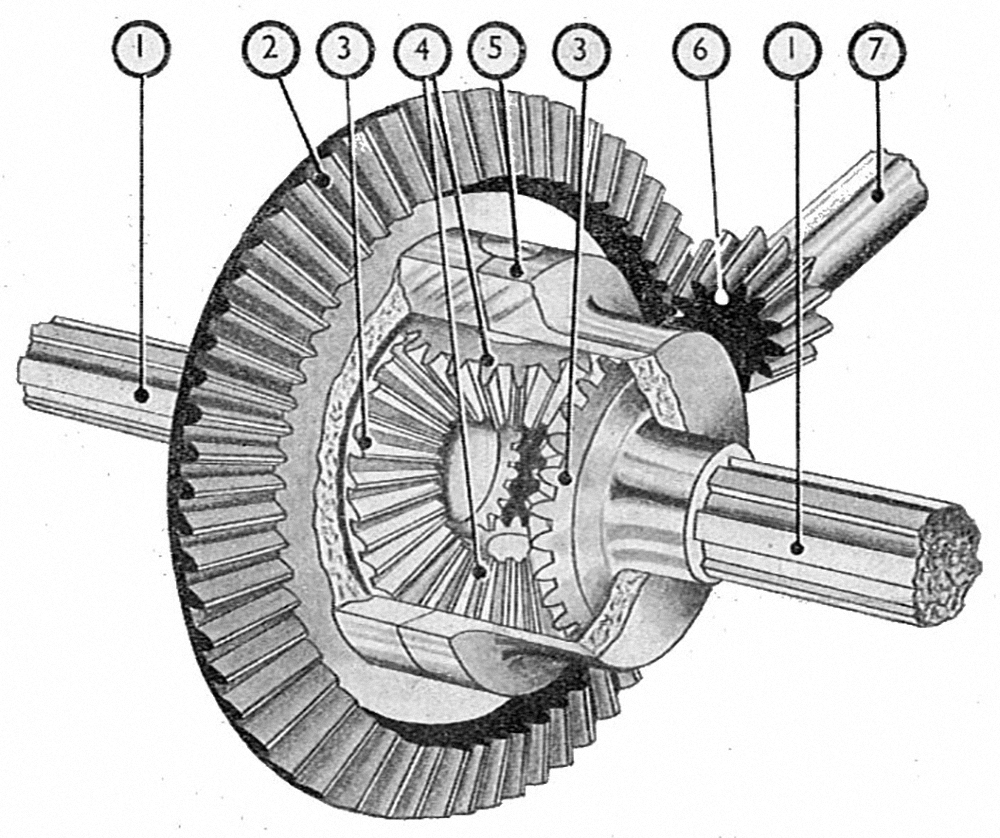RECOIL OFFGRID Transportation All-Wheel-Drive vs 4×4: What’s the Difference?
If you've ever had a conversation with a mechanic or gearhead friend, you'll surely know that speaking in automotive terms can be like speaking another language. To the average person on the street, terms like torque vectoring, locking differentials, pinion gears, and half-shafts are meaningless. However, there's one pair of terms that's more confusing than it needs to be: all-wheel-drive vs 4×4.

This illustration of a differential shows how power is transmitted from the engine (7) to the axles (1) and the wheels.
Many off-road-capable vehicles these days are marketed as having one of these two systems, and the differences between the two are often confusing to consumers. These systems both send power to all four of the car or truck's wheels, but the way in which they do so is different. A true 4×4 system is also significantly more capable for extreme off-road use than an all-wheel-drive system, making the distinction even more important to understand.
4×4, also known as part-time four-wheel-drive or 4WD, is a system that can be set to transfer power to either two or four wheels. Generally this is accomplished through the use of a transfer case, which the driver of the vehicle can engage or disengage with a lever, knob, or button inside the vehicle. Many 4×4 vehicles have a 2-wheel-drive setting for everyday use, as well as high-range and low-range settings, labeled as 4-Hi and 4-Lo. These options effectively give the driver more power and control at low speeds — for example, selecting 4-Lo would help crawl up a muddy slope at 5mph.

Vehicles with true 4×4 systems are ideal for heavy off-road use, such as climbing steep hills, crawling over boulders, and tackling rutted muddy trails.
All-wheel-drive, also called full-time four-wheel-drive or AWD, typically powers all four wheels at all times. Many modern AWD vehicles have anti-slip systems to distribute power from front-to-back or side-to-side. So, if one wheel begins to spin, power will be sent by a computerized or mechanical device to the other three in order to help the vehicle keep moving. Most AWD vehicles don't have user-controlled settings to force the vehicle into two-wheel-drive mode, or high or low reduction gear transfer case settings.
AWD excels on loose surfaces, such as gravel, sand, or snow, and is often used in off-road rally cars for this reason. However, it isn't ideal for low-speed crawling over extremely tough terrain.
To see a better demonstration of all-wheel-drive vs 4×4, check out the video below from The Fast Lane. It compares an AWD Mitsubishi SUV to a 4×4 Nissan pickup truck.
 STAY SAFE: Download a Free copy of the OFFGRID Outbreak Issue
STAY SAFE: Download a Free copy of the OFFGRID Outbreak Issue
No Comments